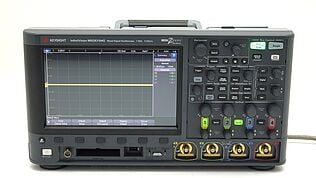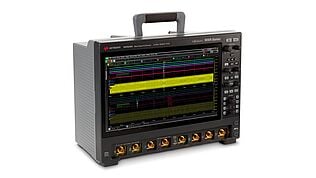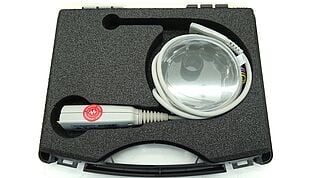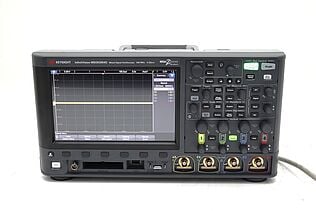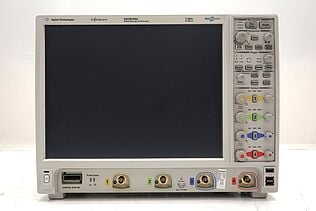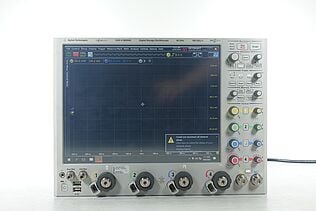- Introduction
- Period of Time Defined
- Characteristics of the Period in Electronics
- Importance of Period in Electronics
- Period vs. Frequency for Common Waveforms
- Measuring the Period of Time Using an Oscilloscope
- Common Challenges and Solutions in Period Measurement
- Challenges with High Frequencies
- Challenges with Low Amplitude Signals
- Other Common Challenges
- Practical Applications of Period Measurements
- Telecommunications
- Digital Electronics
- Signal Processing
- Power Electronics
- Conclusion
- Whenever You’re Ready, Here Are 5 Ways We Can Help You
Have you ever wondered what keeps electrical signals in sync? In electronics, period of time is a key player, albeit a subtle one. It's what ensures that electrical signals follow a consistent, predictable pattern.
This article will help you understand period of time in electronics, highlighting its critical role and the techniques used to measure it. Let's dive into this vital concept that shapes the behavior of electronic signals.
Period of Time Defined
The period of time, often simply referred to as the period, is a vital measurement in electronics. It is defined as the duration it takes for one complete cycle of a waveform to occur. This concept is particularly relevant for analyzing alternating current (AC) or periodic electronic signals.
| Key Takeaway |
|---|
| Understanding and accurately measuring the period of electronic signals is crucial for the efficiency and reliability of various applications in electronics, from digital systems to communication technologies. |
Certified Refurbished Oscilloscopes On Sale Now
Characteristics of the Period in Electronics
The period of an electronic signal is a defining aspect that impacts various facets of electronics. It carries unique characteristics:
- Repetitive nature: The period signifies the duration for a waveform to complete one full cycle and return to its initial state. This repeatability is essential in understanding and predicting the behavior of electronic signals.
- Measurement units: Typically measured in seconds, the period's unit scales down to milliseconds, microseconds, or nanoseconds to accommodate the varying frequencies of different waveforms. This flexibility in measurement units allows for precise characterization of signals across a broad spectrum of frequencies.
- Inverse relationship with frequency: There's a fundamental inverse correlation between the period and the frequency of a signal. As the frequency of a waveform increases, its period correspondingly decreases. This relationship is mathematically expressed as T = 1/f. T is the period, and f is the frequency.
Importance of Period in Electronics
The period plays a pivotal role in various aspects of electronics, underlining its indispensability in the field:
- Signal analysis: In signal analysis, the period provides insights into the repetitive nature and timing of the signal. Engineers use this information to understand signal behavior, identify anomalies, and ensure that the signal operates within desired parameters.
- Circuit design: The period is a critical consideration in the design of electronic circuits. For instance, in timing circuits, the period determines how long a timer should run. In oscillators, it dictates the oscillation rate. Similarly, in filter design, the period influences how the filter responds to different frequencies.
- Communication systems: The period of a signal is especially significant in digital communication systems. It influences key parameters like data transmission rates and bandwidth requirements.
- Synchronization: In systems where multiple signals or components must operate in harmony, the period of each signal becomes crucial. It ensures that all components are synchronized, preventing timing-related errors or inefficiencies.
- Troubleshooting and diagnostics: In diagnosing electronic issues, analyzing the period of signals can help identify problems like signal drift, noise, or interference. By examining the period, engineers can ascertain whether a signal is stable or if there are factors affecting its regularity.
Period vs. Frequency for Common Waveforms
| Frequency (Hz) | Period (Seconds) |
|---|---|
| 50 | 0.02 |
| 60 | 0.0167 |
| 100 | 0.01 |
| 1,000 | 0.001 |
| 10,000 | 0.0001 |
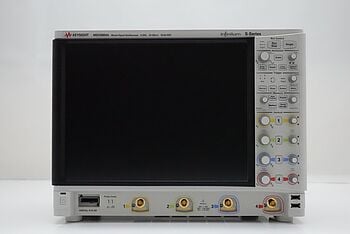
Measuring the Period of Time Using an Oscilloscope
Oscilloscopes are essential tools for measuring the period of electronic signals. These devices visualize waveforms and provide detailed insights into their characteristics. Here's an expanded guide on how to accurately measure the period of a signal using an oscilloscope.
1. Connect the signal
Ensure the oscilloscope is off before connecting. Attach the probe to the circuit point where the signal will be measured and properly ground the oscilloscope to prevent noise or interference.
2.Adjust the settings
Set the time base control to adjust the horizontal scale of the display for a clear view of the waveform. Adjust the amplitude setting so the waveform occupies a significant portion of the screen without going off the edges. Set up the triggering to stabilize the waveform, preventing horizontal drift.
3. Identify one cycle
Identify a complete cycle of the waveform, typically from one peak to the next or one trough to the next. Ensure the waveform is consistent and representative of the signal being measured.
4. Measure the duration
Use the oscilloscope's grid or cursor functions to measure the time duration of the identified cycle. If using the grid, count the number of divisions the cycle spans and multiply by the time per division. For cursor functions, place cursors at the start and end of one cycle and read the period directly from the display.
By following these steps, you can effectively use an oscilloscope to measure the period of electronic signals, gaining valuable insights into their behavior and properties.
Common Challenges and Solutions in Period Measurement
Measuring the period of electronic signals can sometimes be challenging, particularly when dealing with extremes like very high frequencies or very low amplitude signals.
Here are some common issues along with the best practices for addressing them.
Challenges with High Frequencies
Issue: When dealing with high-frequency signals, the main challenge lies in the oscilloscope's bandwidth limitation. If the frequency of the signal approaches or exceeds the oscilloscope's bandwidth, the instrument may not accurately display the waveform, leading to incorrect period measurements.
Solutions
- Use a suitable oscilloscope: Ensure the oscilloscope's bandwidth is significantly higher than the highest frequency of the signal being measured.
- Waveform visualization: Use averaging or high-resolution mode to reduce noise, making the waveform more visible and easier to measure.
- Proper probing: Use active probes designed for high frequencies to minimize loading effects and signal distortion.
Challenges with Low Amplitude Signals
Issue: Low amplitude signals pose a challenge because they can be masked by the oscilloscope's internal noise floor or external electromagnetic interference (EMI), making it difficult to identify and measure the period accurately.
Solutions
- Increase signal-to-noise ratio: Use signal amplification if necessary or employ filtering techniques to reduce noise.
- Optimize oscilloscope settings: Adjust the vertical sensitivity of the oscilloscope to maximize the signal's amplitude on the screen without clipping.
- Shielding and grounding: Implement proper shielding and grounding techniques to minimize interference from external sources.
Other Common Challenges
- Complex waveforms: Some signals may have complex waveforms, making it difficult to identify a single, clear cycle for measurement.
- Solution: Use advanced oscilloscope functions like waveform math or FFT (Fast Fourier Transform) to break down the signal into simpler components for easier analysis.
- Signal instability: Unstable signals that vary in frequency or amplitude over time can complicate period measurement.
- Solution: Utilize the oscilloscope's triggering and hold-off capabilities to stabilize the waveform display for consistent measurements.
- Environmental factors: Temperature, humidity, and other environmental factors can affect both the signal and the measurement equipment.
- Solution: Conduct measurements in a controlled environment whenever possible and calibrate the equipment regularly to account for environmental variations.
By understanding these challenges and implementing the appropriate solutions, engineers can achieve accurate and reliable period measurements in a wide range of scenarios, ensuring the integrity and effectiveness of their electronic designs and analyses.
Ready to Find The Perfect Oscilloscope?
Select up to 3 instruments to compare
Enable Notifications
In order to use this feature, you need to enable notifications.
Manage notification preferences
Practical Applications of Period Measurements
Period measurements play a crucial role across various fields in electronics, each showcasing the versatility and importance of this fundamental concept.
Telecommunications
In telecommunications, the period of a signal directly influences data transmission rates. Accurate period measurements ensure the integrity of signal transmission over various media, be it fiber optics or wireless communication. This is especially critical in high-speed data networks, where precise timing is essential for maintaining efficient and error-free data transfer.
Digital Electronics
In the realm of digital electronics, the period determines the clock speed of digital circuits, including microprocessors and microcontrollers. The measurement of the period is key to optimizing the performance and efficiency of these devices, as it affects processing speed and power consumption.
Signal Processing
Signal processing, which includes audio, video, and data signal manipulation, relies heavily on period measurements. Accurate measurement allows for effective filtering, modulation, and demodulation processes, ensuring that signals are processed without distortion or loss of quality.
Power Electronics
In power electronics, the period measurement is vital for controlling and converting electric power efficiently. It's essential in the design and operation of inverters, converters, and power supplies where precise timing control is necessary to maintain stability and efficiency.
Conclusion
The measurement of the period of time in electronic signals is more than just a technical task. It allows professionals to ensure the correct functioning of digital systems, maintain the integrity of communications, and advance innovations in various fields, from telecommunications to power electronics.
For professionals looking to measure and analyze signal periods with precision, Keysight Used Equipment Store offers a range of premium used oscilloscopes,spectrum analyzers, waveform generators, and multimeters.
These high-quality instruments provide the accuracy and reliability needed for effective period measurement and analysis in any electronic field. Explore Keysight's selection to find the right tools for your electronic measurement needs.

Whenever You’re Ready, Here Are 5 Ways We Can Help You
- Browse our Premium Used Oscilloscopes.
- Call tech support US: +1 800 829-4444
Press #, then 2. Hours: 7 am – 5 pm MT, Mon– Fri - Talk to our sales support team by clicking the icon (bottom right corner) on every offer page
- Create an account to get price alerts and access to exclusive waitlists.
- Talk to your account manager about your specific needs.



